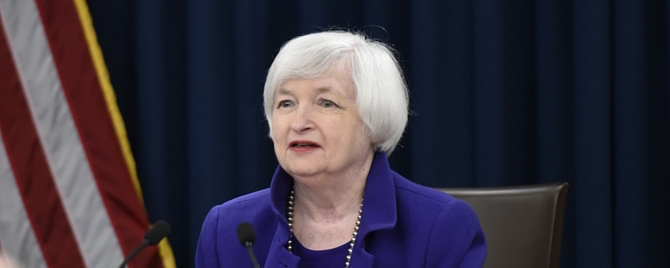After months of speculation by pundits and economists, the Federal Open Market Committee (FOMC) voted on Wednesday, December 16, 2015, to raise rates.
FOMC Rate Decision Overview
The FOMC vote raises the Fed Funds rate by 25 basis points to a range between 0.25% and 0.50%, from the previous range of 0.00% to 0.25%. It’s the Feds Funds rate that eventually influences other interest rates such as home mortgages, credit cards, and auto loans.
The Board of Governors of the Federal Reserve System also approved the requests by twelve Reserve Banks to increase the primary credit rate, generally known as the discount rate, to 1.00% from 0.75%. The discount rate is the interest rate at which Reserve Banks extend credit through the discount window to generally sound depository institutions within their Districts.
About the Discount Rate
Although the Fed Funds rate garners much of the attention, it is the discount rate that is under the direct purview of the individual Reserve Banks. The Board of Directors of each Reserve Bank votes on the rate, which is then subject to review and determination by the Board of Governors.
Until January 9, 2003, the discount rate was a below-market rate. Subsequent to that date, the rate has been targeted to 50 basis points above the top of the range for the targeted Fed Funds rate. The last move in the primary credit rate was more than 5 years ago in February 2010 when it was raised to 0.75% from 0.50%. Changes in the discount rate are generally timed with changes in the Fed Funds rate as part the implementation of monetary policy.
The Reserve Banks’ discount window operations help to relieve liquidity strains for individual depository institutions and for the banking system as a whole by providing a reliable backup source of funding, generally on an overnight basis. All discount window loans are collateralized with eligible bank assets. The Board of Governors publishes quarterly data on financial institutions’ discount window borrowings, with a two-year lag.
Please visit the Board of Governors’ website for more information on primary credit and other discount window programs.
You may also want to read:
- Dancing Days Are Here Again: The Long Road Back to Maximum Employment
- FRBSF FedViews: December 10, 2015
- What is the Fed?
- Chair the Fed: A Monetary Policy Game
Photo credit: Federal Reserve System via Flickr; U.S. Government Works
The views expressed here do not necessarily reflect the views of the management of the Federal Reserve Bank of San Francisco or of the Board of Governors of the Federal Reserve System.
